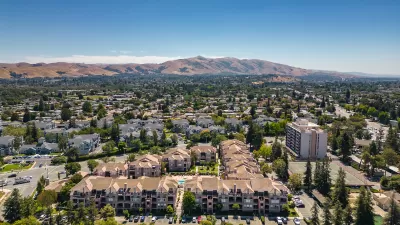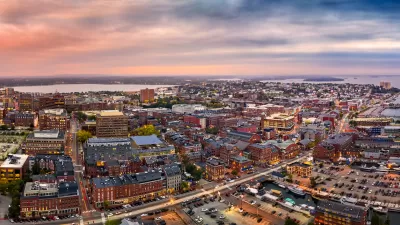When wanting to downsize their living situation, some older Americans are startled to find a dearth of smaller housing units in their neighborhoods.

Writing in the New York Times, Dana Goldstein and Robert Gebeloff describe an unexpected consequence of decades of strict single-family zoning and restrictions on multifamily units: now, aging Boomers and Gen X-ers who want to downsize from their sprawling family homes are finding it difficult to secure new housing in the communities they live in.
As the number of people over 50 living alone rises sharply—today, 36 percent of households headed by an adult over 50 have a single occupant—“the nation’s housing stock has grown out of sync with these shifting demographics,” Goldstein and Gebeloff explain.
Living solo in homes with three or more bedrooms sounds like a luxury but, experts said, it is a trend driven less by personal choice than by the nation’s limited housing supply. Because of zoning and construction limitations in many cities and towns, there is a nationwide shortage of homes below 1,400 square feet, which has driven up the cost of the smaller units that do exist, according to research from Freddie Mac.
Now, people seeking to move into smaller homes or condos often find it more expensive, if not impossible. As the article points out, “The constraints are especially severe for many older Black Americans, for whom the legacy of redlining and segregation has meant that homeownership has not generated as much wealth.”
FULL STORY: As Gen X and Boomers Age, They Confront Living Alone

Planetizen Federal Action Tracker
A weekly monitor of how Trump’s orders and actions are impacting planners and planning in America.

Maui's Vacation Rental Debate Turns Ugly
Verbal attacks, misinformation campaigns and fistfights plague a high-stakes debate to convert thousands of vacation rentals into long-term housing.

San Francisco Suspends Traffic Calming Amidst Record Deaths
Citing “a challenging fiscal landscape,” the city will cease the program on the heels of 42 traffic deaths, including 24 pedestrians.

Amtrak Rolls Out New Orleans to Alabama “Mardi Gras” Train
The new service will operate morning and evening departures between Mobile and New Orleans.

The Subversive Car-Free Guide to Trump's Great American Road Trip
Car-free ways to access Chicagoland’s best tourist attractions.

San Antonio and Austin are Fusing Into one Massive Megaregion
The region spanning the two central Texas cities is growing fast, posing challenges for local infrastructure and water supplies.
Urban Design for Planners 1: Software Tools
This six-course series explores essential urban design concepts using open source software and equips planners with the tools they need to participate fully in the urban design process.
Planning for Universal Design
Learn the tools for implementing Universal Design in planning regulations.
Heyer Gruel & Associates PA
JM Goldson LLC
Custer County Colorado
City of Camden Redevelopment Agency
City of Astoria
Transportation Research & Education Center (TREC) at Portland State University
Jefferson Parish Government
Camden Redevelopment Agency
City of Claremont





























